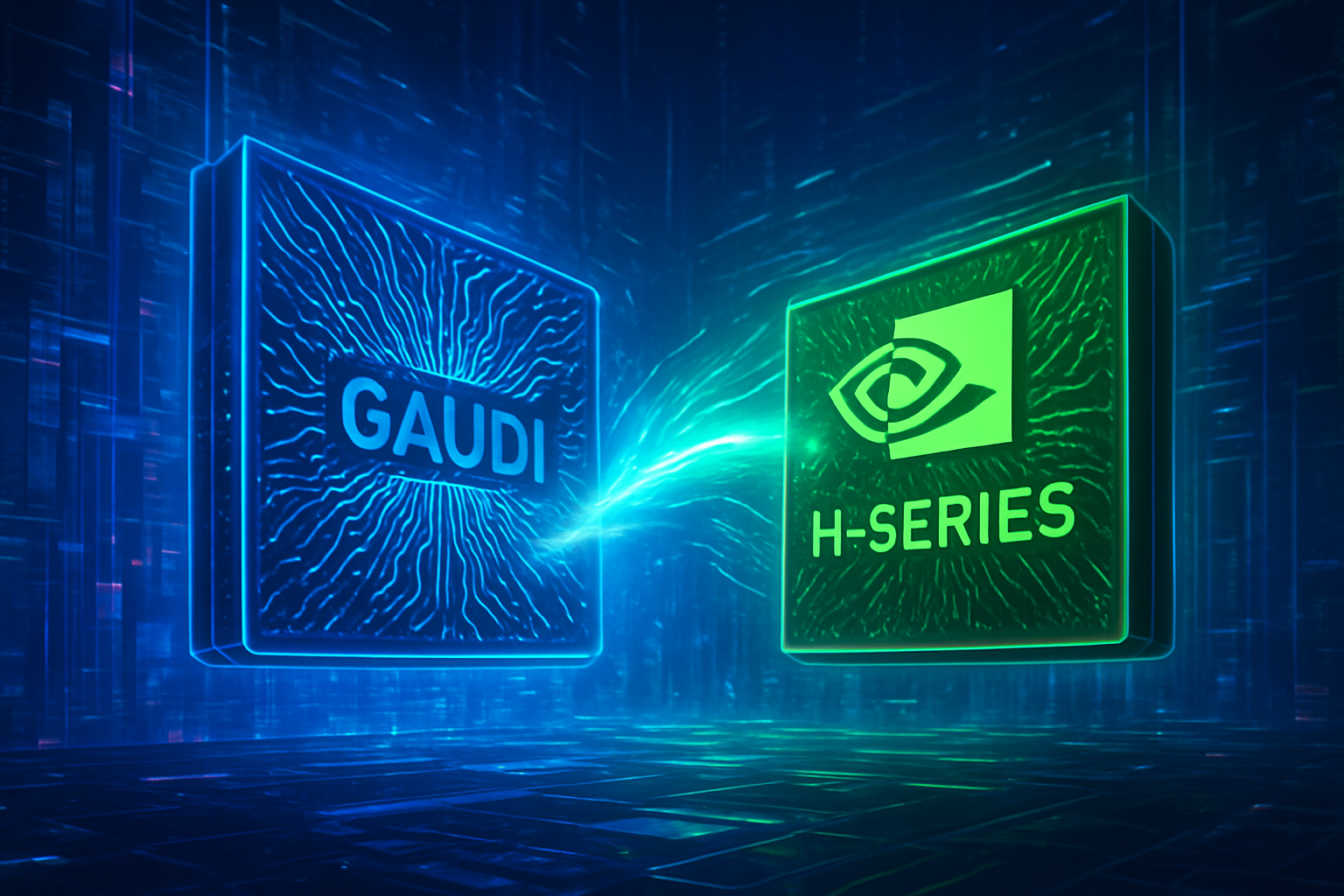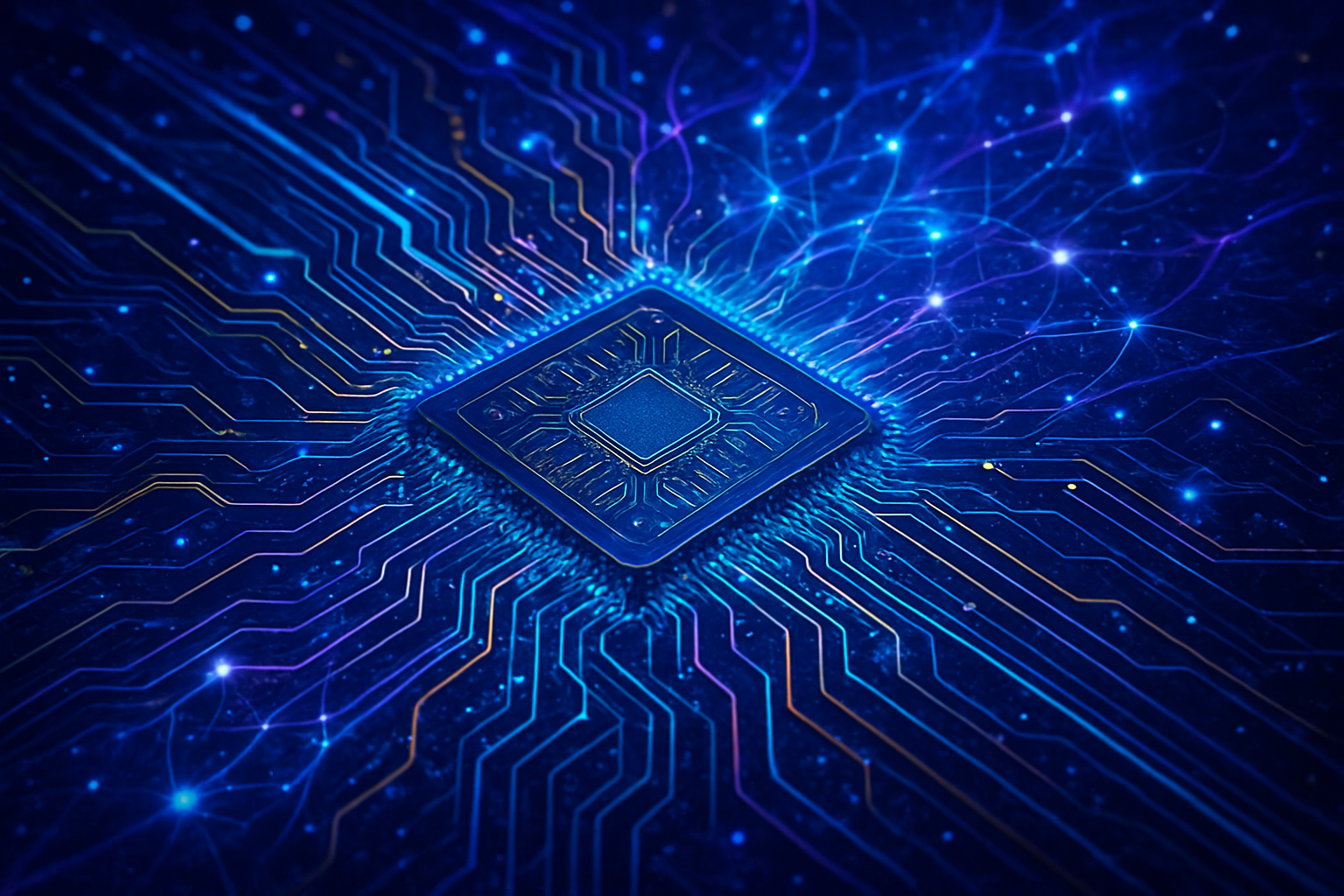The explosive growth of Artificial Intelligence, particularly in Large Language Models (LLMs), has brought with it an unprecedented challenge: the "data bottleneck." As LLMs scale to billions and even trillions of parameters, their insatiable demand for memory bandwidth and capacity threatens to outpace even the most advanced processing units. In response, two cutting-edge memory technologies, High Bandwidth Memory (HBM) and Compute Express Link (CXL), have emerged as critical enablers, fundamentally reshaping the AI hardware landscape and unlocking new frontiers for intelligent systems.
These innovations are not mere incremental upgrades; they represent a paradigm shift in how data is accessed, managed, and processed within AI infrastructures. HBM, with its revolutionary 3D-stacked architecture, provides unparalleled data transfer rates directly to AI accelerators, ensuring that powerful GPUs are continuously fed with the information they need. Complementing this, CXL offers a cache-coherent interconnect that enables flexible memory expansion, pooling, and sharing across heterogeneous computing environments, addressing the growing need for vast, shared memory resources. Together, HBM and CXL are dismantling the memory wall, accelerating AI development, and paving the way for the next generation of intelligent applications.
Technical Deep Dive: HBM, CXL, and the Architecture of Modern AI
The core of overcoming the AI data bottleneck lies in understanding the distinct yet complementary roles of HBM and CXL. These technologies represent a significant departure from traditional memory architectures, offering specialized solutions for the unique demands of AI workloads.
High Bandwidth Memory (HBM): The Speed Demon of AI
HBM stands out due to its unique 3D-stacked architecture, where multiple DRAM dies are vertically integrated and connected via Through-Silicon Vias (TSVs) to a base logic die. This compact, proximate arrangement to the processing unit drastically shortens data pathways, leading to superior bandwidth and reduced latency compared to conventional DDR (Double Data Rate) or GDDR (Graphics Double Data Rate) memory.
- HBM2 (JEDEC, 2016): Offered up to 256 GB/s per stack with capacities up to 8 GB per stack. It introduced a 1024-bit wide interface and optional ECC support.
- HBM2e (JEDEC, 2018): An enhancement to HBM2, pushing bandwidth to 307-410 GB/s per stack and supporting capacities up to 24 GB per stack (with 12-Hi stacks). NVIDIA's (NASDAQ: NVDA) A100 GPU, for instance, leverages HBM2e to achieve 2 TB/s aggregate bandwidth.
- HBM3 (JEDEC, 2022): A significant leap, standardizing 6.4 Gbps per pin for 819 GB/s per stack. It supports up to 64 GB per stack (though current implementations are typically 48 GB) and doubles the number of memory channels to 16. NVIDIA's (NASDAQ: NVDA) H100 GPU utilizes HBM3 to deliver an astounding 3 TB/s aggregate memory bandwidth.
- HBM3e: An extension of HBM3, further boosting pin speeds to over 9.2 Gbps, yielding more than 1.2 TB/s bandwidth per stack. Micron's (NASDAQ: MU) HBM3e, for example, offers 24-36 GB capacity per stack and claims a 2.5x improvement in performance/watt over HBM2e.
Unlike DDR/GDDR, which rely on wide buses at very high clock speeds across planar PCBs, HBM achieves its immense bandwidth through a massively parallel 1024-bit interface at lower clock speeds, directly integrated with the processor on an interposer. This results in significantly lower power consumption per bit, a smaller physical footprint, and reduced latency, all critical for the power and space-constrained environments of AI accelerators and data centers. For LLMs, HBM's high bandwidth ensures rapid access to massive parameter sets, accelerating both training and inference, while its increased capacity allows larger models to reside entirely in GPU memory, minimizing slower transfers.
Compute Express Link (CXL): The Fabric of Future Memory
CXL is an open-standard, cache-coherent interconnect built on the PCIe physical layer. It's designed to create a unified, coherent memory space between CPUs, GPUs, and other accelerators, enabling memory expansion, pooling, and sharing.
- CXL 1.1 (2019): Based on PCIe 5.0 (32 GT/s), it enabled CPU-coherent access to memory on CXL devices and supported memory expansion via Type 3 devices. An x16 link offers 64 GB/s bi-directional bandwidth.
- CXL 2.0 (2020): Introduced CXL switching, allowing multiple CXL devices to connect to a CXL host. Crucially, it enabled memory pooling, where a single memory device could be partitioned and accessed by up to 16 hosts, improving memory utilization and reducing "stranded" memory.
- CXL 3.0 (2022): A major leap, based on PCIe 6.0 (64 GT/s) for up to 128 GB/s bi-directional bandwidth for an x16 link with zero added latency over CXL 2.0. It introduced true coherent memory sharing, allowing multiple hosts to access the same memory segment simultaneously with hardware-enforced coherency. It also brought advanced fabric capabilities (multi-level switching, non-tree topologies for up to 4,096 nodes) and peer-to-peer (P2P) transfers between devices without CPU mediation.
CXL's most transformative feature for LLMs is its ability to enable memory pooling and expansion. LLMs often exceed the HBM capacity of a single GPU, requiring offloading of key-value (KV) caches and optimizer states. CXL allows systems to access a much larger, shared memory space that can be dynamically allocated. This not only expands effective memory capacity but also dramatically improves GPU utilization and reduces the total cost of ownership (TCO) by minimizing the need for over-provisioning. Initial reactions from the AI community highlight CXL as a "critical enabler" for future AI architectures, complementing HBM by providing scalable capacity and unified coherent access, especially for memory-intensive inference and fine-tuning workloads.
The Corporate Battlefield: Winners, Losers, and Strategic Shifts
The rise of HBM and CXL is not just a technical revolution; it's a strategic battleground shaping the competitive landscape for tech giants, AI labs, and burgeoning startups alike.
Memory Manufacturers Ascendant:
The most immediate beneficiaries are the "Big Three" memory manufacturers: SK Hynix (KRX: 000660), Samsung Electronics (KRX: 005930), and Micron Technology (NASDAQ: MU). Their HBM capacity is reportedly sold out through 2025 and well into 2026, transforming them from commodity suppliers into indispensable strategic partners in the AI hardware supply chain. SK Hynix has taken an early lead in HBM3 and HBM3e, supplying key players like NVIDIA (NASDAQ: NVDA). Samsung (KRX: 005930) is aggressively pursuing both HBM and CXL, showcasing memory pooling and HBM-PIM (processing-in-memory) solutions. Micron (NASDAQ: MU) is rapidly scaling HBM3E production, with its lower power consumption offering a competitive edge, and is developing CXL memory expansion modules. This surge in demand has led to a "super cycle" for these companies, driving higher margins and significant R&D investments in next-generation HBM (e.g., HBM4) and CXL memory.
AI Accelerator Designers: The HBM Imperative:
Companies like NVIDIA (NASDAQ: NVDA), Intel (NASDAQ: INTC), and AMD (NASDAQ: AMD) are fundamentally reliant on HBM for their high-performance AI chips. NVIDIA's (NASDAQ: NVDA) dominance in the AI GPU market is inextricably linked to its integration of cutting-edge HBM, exemplified by its H200 GPUs. While NVIDIA (NASDAQ: NVDA) also champions its proprietary NVLink interconnect for superior GPU-to-GPU bandwidth, CXL is seen as a complementary technology for broader memory expansion and pooling within data centers. Intel (NASDAQ: INTC), with its strong CPU market share, is a significant proponent of CXL, integrating it into server CPUs like Sapphire Rapids to enhance the value proposition of its platforms for AI workloads. AMD (NASDAQ: AMD) similarly leverages HBM for its Instinct accelerators and is an active member of the CXL Consortium, indicating its commitment to memory coherency and resource optimization.
Hyperscale Cloud Providers: Vertical Integration and Efficiency:
Cloud giants such as Alphabet (NASDAQ: GOOGL) (Google), Amazon Web Services (NASDAQ: AMZN) (AWS), and Microsoft (NASDAQ: MSFT) are not just consumers; they are actively shaping the future. They are investing heavily in custom AI silicon (e.g., Google's TPUs, Microsoft's Maia 100) that tightly integrate HBM to optimize performance, control costs, and reduce reliance on external GPU providers. CXL is particularly beneficial for these hyperscalers as it enables memory pooling and disaggregation, potentially saving billions by improving resource utilization and eliminating "stranded" memory across their vast data centers. This vertical integration provides a significant competitive edge in the rapidly expanding AI-as-a-service market.
Startups: New Opportunities and Challenges:
HBM and CXL create fertile ground for startups specializing in memory management software, composable infrastructure, and specialized AI hardware. Companies like MemVerge and PEAK:AIO are leveraging CXL to offer solutions that can offload data from expensive GPU HBM to CXL memory, boosting GPU utilization and expanding memory capacity for LLMs at a potentially lower cost. However, the oligopolistic control of HBM production by a few major players presents supply and cost challenges for smaller entities. While CXL promises flexibility, its widespread adoption still seeks a "killer app," and some proprietary interconnects may offer higher bandwidth for core AI acceleration.
Disruption and Market Positioning:
HBM is fundamentally transforming the memory market, elevating memory from a commodity to a strategic component. This shift is driving a new paradigm of stable pricing and higher margins for leading memory players. CXL, on the other hand, is poised to revolutionize data center architectures, enabling a shift towards more flexible, fabric-based, and composable computing crucial for managing diverse and dynamic AI workloads. The immense demand for HBM is also diverting production capacity from conventional memory, potentially impacting supply and pricing in other sectors. The long-term vision includes the integration of HBM and CXL, with future HBM standards expected to incorporate CXL interfaces for even more cohesive memory subsystems.
A New Era for AI: Broader Significance and Future Trajectories
The advent of HBM and CXL marks a pivotal moment in the broader AI landscape, comparable in significance to foundational shifts like the move from CPU to GPU computing or the development of the Transformer architecture. These memory innovations are not just enabling larger models; they are fundamentally reshaping how AI is developed, deployed, and experienced.
Impacts on AI Model Training and Inference:
For AI model training, HBM's unparalleled bandwidth drastically reduces training times by ensuring that GPUs are constantly fed with data, allowing for larger batch sizes and more complex models. CXL complements this by enabling CPUs to assist with preprocessing while GPUs focus on core computation, streamlining parallel processing. For AI inference, HBM delivers the low-latency, high-speed data access essential for real-time applications like chatbots and autonomous systems, accelerating response times. CXL further boosts inference performance by providing expandable and shareable memory for KV caches and large context windows, improving GPU utilization and throughput for memory-intensive LLM serving. These technologies are foundational for advanced natural language processing, image generation, and other generative AI applications.
New AI Applications on the Horizon:
The combined capabilities of HBM and CXL are unlocking new application domains. HBM's performance in a compact, energy-efficient form factor is critical for edge AI, powering real-time analytics in autonomous vehicles, drones, portable healthcare devices, and industrial IoT. CXL's memory pooling and sharing capabilities are vital for composable infrastructure, allowing memory, compute, and accelerators to be dynamically assembled for diverse AI/ML workloads. This facilitates the efficient deployment of massive vector databases and retrieval-augmented generation (RAG) applications, which are becoming increasingly important for enterprise AI.
Potential Concerns and Challenges:
Despite their transformative potential, HBM and CXL present challenges. Cost is a major factor; the complex manufacturing of HBM contributes significantly to the price of high-end AI accelerators, and while CXL promises TCO reduction, initial infrastructure investments can be substantial. Complexity in system design and software development is also a concern, especially with CXL's new layers of memory management. While HBM is energy-efficient per bit, the overall power consumption of HBM-powered AI systems remains high. For CXL, latency compared to direct HBM or local DDR, due to PCIe overhead, can impact certain latency-sensitive AI workloads. Furthermore, ensuring interoperability and widespread ecosystem adoption, especially when proprietary interconnects like NVLink exist, remains an ongoing effort.
A Milestone on Par with GPUs and Transformers:
HBM and CXL are addressing the "memory wall" – the persistent bottleneck of providing processors with fast, sufficient memory. This is as critical as the initial shift from CPUs to GPUs, which unlocked parallel processing for deep learning, or the algorithmic breakthroughs like the Transformer architecture, which enabled modern LLMs. While previous milestones focused on raw compute power or algorithmic efficiency, HBM and CXL are ensuring that the compute engines and algorithms have the fuel they need to operate at their full potential. They are not just enabling larger models; they are enabling smarter, faster, and more responsive AI, driving the next wave of innovation across industries.
The Road Ahead: Navigating the Future of AI Memory
The journey for HBM and CXL is far from over, with aggressive roadmaps and continuous innovation expected in the coming years. These technologies will continue to evolve, shaping the capabilities and accessibility of future AI systems.
Near-Term and Long-Term Developments:
In the near term, the focus is on the widespread adoption and refinement of HBM3e and CXL 2.0/3.0. HBM3e is already shipping, with Micron (NASDAQ: MU) and SK Hynix (KRX: 000660) leading the charge, offering enhanced performance and power efficiency. CXL 3.0's capabilities for coherent memory sharing and multi-level switching are expected to see increasing deployment in data centers.
Looking long term, HBM4 is anticipated by late 2025 or 2026, promising 2.0-2.8 TB/s per stack and capacities up to 64 GB, alongside a 40% power efficiency boost. HBM4 is expected to feature client-specific 'base die' layers for unprecedented customization. Beyond HBM4, HBM5 (around 2029) is projected to reach 4 TB/s per stack, with future generations potentially incorporating Near-Memory Computing (NMC) to reduce data movement. The number of HBM layers is also expected to increase dramatically, possibly reaching 24 layers by 2030, though this presents significant integration challenges. For CXL, future iterations like CXL 3.1, paired with PCIe 6.2, will enable even more layered memory exchanges and peer-to-peer access, pushing towards a vision of "Memory-as-a-Service" and fully disaggregated computational fabrics.
Potential Applications and Use Cases on the Horizon:
The continuous evolution of HBM and CXL will enable even more sophisticated AI applications. HBM will remain indispensable for training and inference of increasingly massive LLMs and generative AI models, allowing them to process larger context windows and achieve higher fidelity. Its integration into edge AI devices will empower more autonomous and intelligent systems closer to the data source. CXL's memory pooling and sharing will become foundational for building truly composable data centers, where memory resources are dynamically allocated across an entire fabric, optimizing resource utilization for complex AI, ML, and HPC workloads. This will be critical for the growth of vector databases and real-time retrieval-augmented generation (RAG) systems.
Challenges and Expert Predictions:
Key challenges persist, including the escalating cost and production bottlenecks of HBM, which are driving up the price of AI accelerators. Thermal management for increasingly dense HBM stacks and integration complexities will require innovative packaging solutions. For CXL, continued development of the software ecosystem to effectively leverage tiered memory and manage latency will be crucial. Some experts also raise questions about CXL's IO efficiency for core AI training compared to other high-bandwidth interconnects.
Despite these challenges, experts overwhelmingly predict significant growth in the AI memory chip market, with HBM remaining a critical enabler. CXL is seen as essential for disaggregated, resource-sharing server architectures, fundamentally transforming data centers for AI. The future will likely see a strong synergy between HBM and CXL: HBM providing the ultra-high bandwidth directly integrated with accelerators, and CXL enabling flexible memory expansion, pooling, and tiered memory architectures across the broader data center. Emerging memory technologies like MRAM and RRAM are also being explored for their potential in neuromorphic computing and in-memory processing, hinting at an even more diverse memory landscape for AI in the next decade.
A Comprehensive Wrap-Up: The Memory Revolution in AI
The journey of AI has always been intertwined with the evolution of its underlying hardware. Today, as Large Language Models and generative AI push the boundaries of computational demand, High Bandwidth Memory (HBM) and Compute Express Link (CXL) stand as the twin pillars supporting the next wave of innovation.
Key Takeaways:
- HBM is the bandwidth king: Its 3D-stacked architecture provides unparalleled data transfer rates directly to AI accelerators, crucial for accelerating both LLM training and inference by eliminating the "memory wall."
- CXL is the capacity and coherence champion: It enables flexible memory expansion, pooling, and sharing across heterogeneous systems, allowing for larger effective memory capacities, improved resource utilization, and lower TCO in AI data centers.
- Synergy is key: HBM and CXL are complementary, with HBM providing the fast, integrated memory and CXL offering the scalable, coherent, and disaggregated memory fabric.
- Industry transformation: Memory manufacturers are now strategic partners, AI accelerator designers are leveraging these technologies for performance gains, and hyperscale cloud providers are adopting them for efficiency and vertical integration.
- New AI frontiers: These technologies are enabling larger, more complex AI models, faster training and inference, and new applications in edge AI, composable infrastructure, and real-time decision-making.
The significance of HBM and CXL in AI history cannot be overstated. They are addressing the most pressing hardware bottleneck of our time, much like GPUs addressed the computational bottleneck decades ago. Without these advancements, the continued scaling and practical deployment of state-of-the-art AI models would be severely constrained. They are not just enabling the current generation of AI; they are laying the architectural foundation for future AI systems that will be even more intelligent, responsive, and pervasive.
In the coming weeks and months, watch for continued announcements from memory manufacturers regarding HBM4 and HBM3e shipments, as well as broader adoption of CXL-enabled servers and memory modules from major cloud providers and enterprise hardware vendors. The race to build more powerful and efficient AI systems is fundamentally a race to master memory, and HBM and CXL are at the heart of this revolution.
This content is intended for informational purposes only and represents analysis of current AI developments.
TokenRing AI delivers enterprise-grade solutions for multi-agent AI workflow orchestration, AI-powered development tools, and seamless remote collaboration platforms.
For more information, visit https://www.tokenring.ai/.









